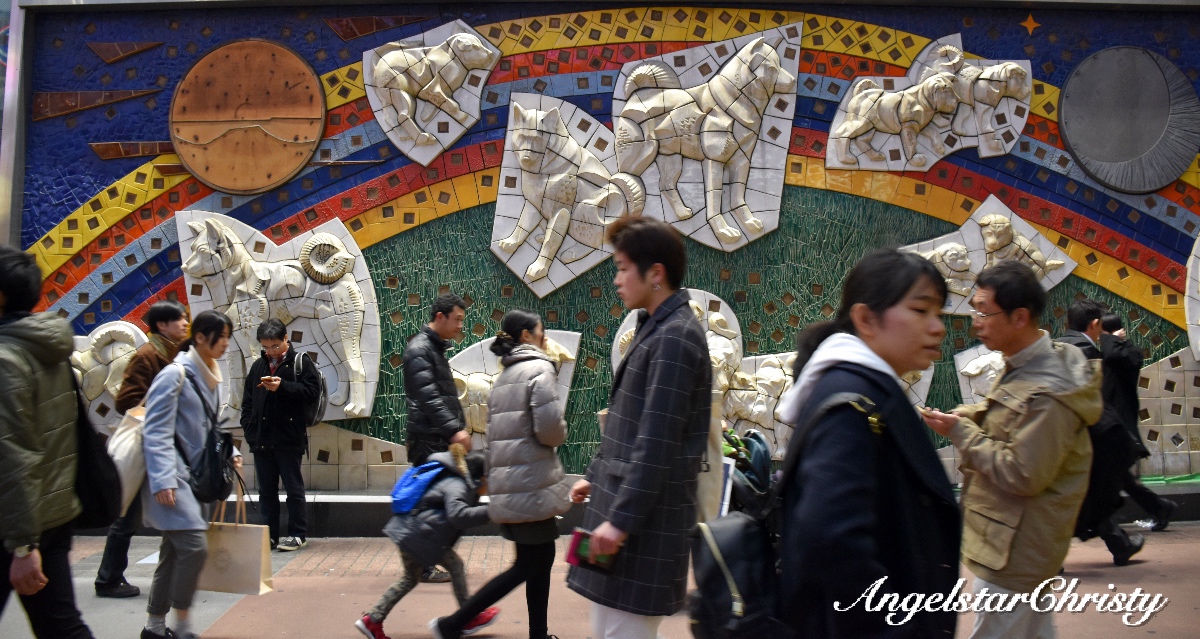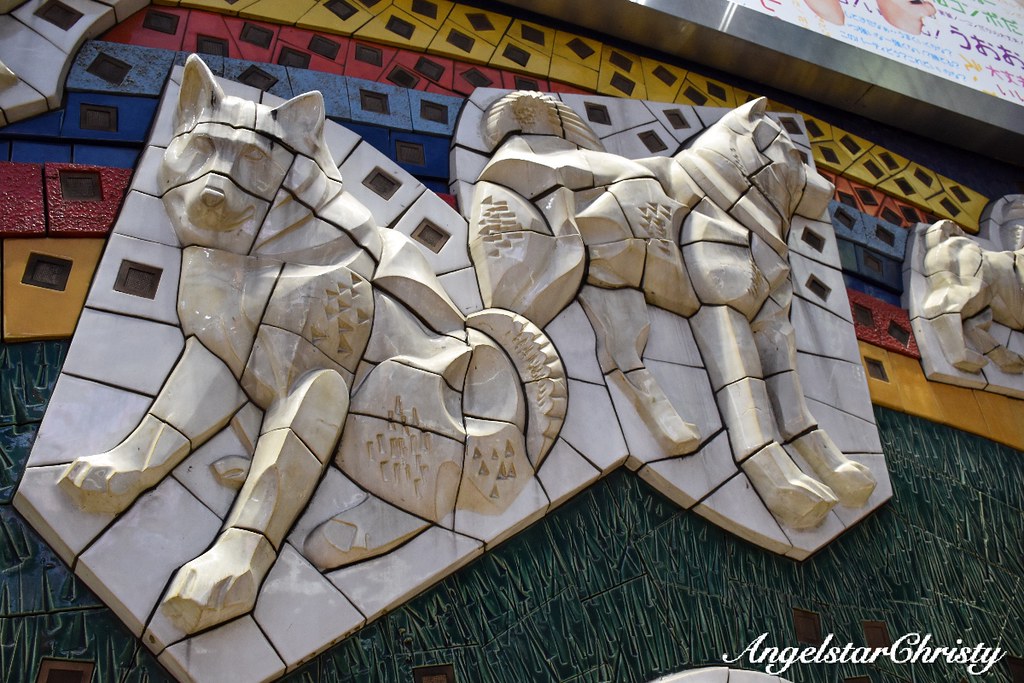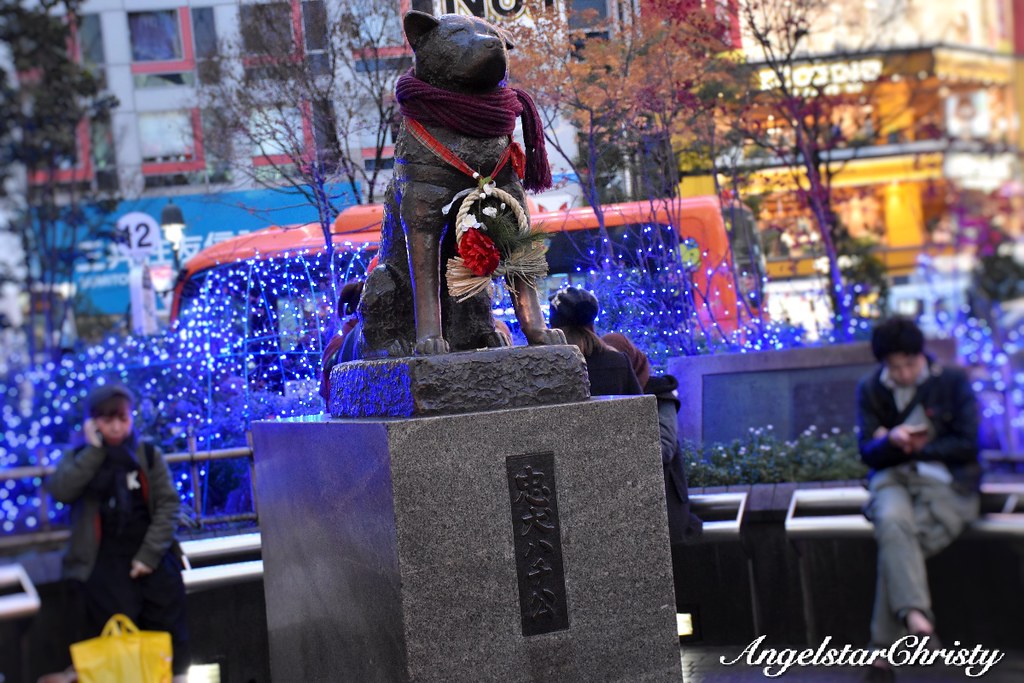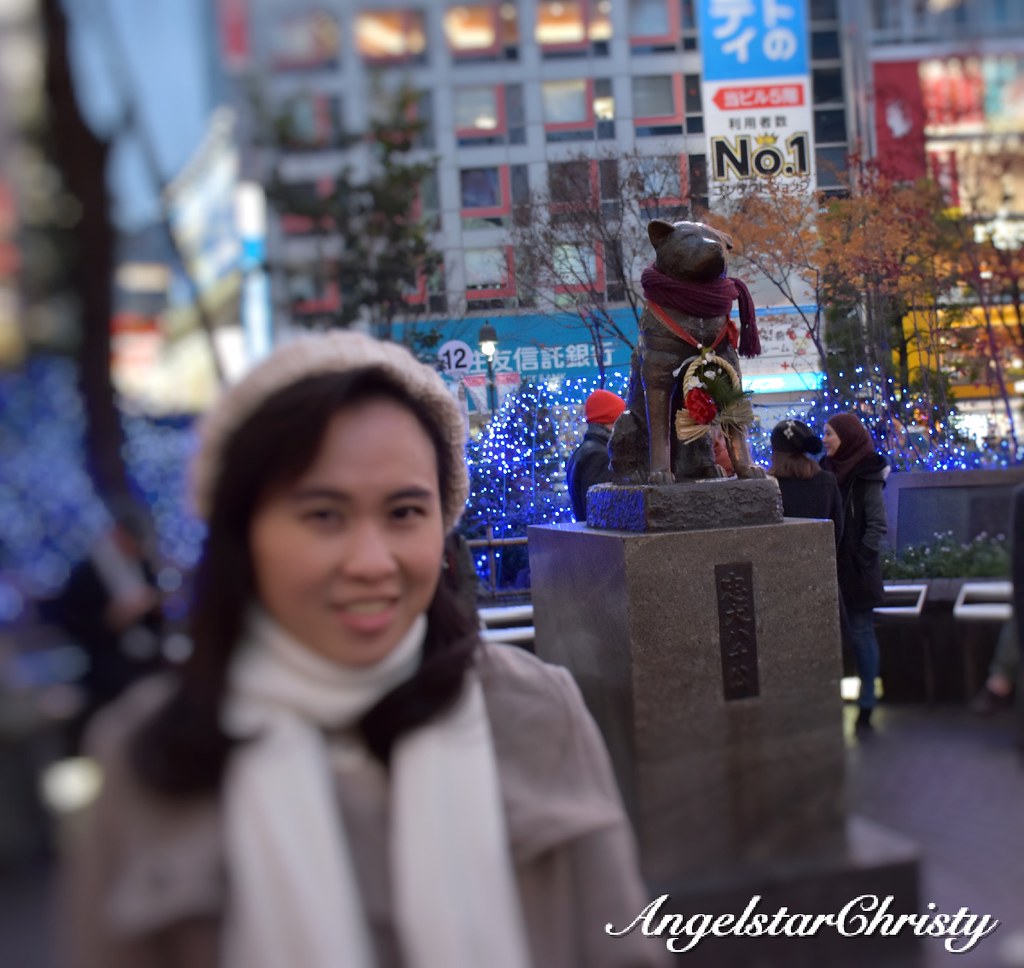
If someone tells you to meet them in Shibuya, chances are they will specify one meeting point.
Shibuya Crossing is not somewhere you would want to stand to meet and greet your friend; it is not strategic to even spot anyone from a short distance away (if that person had not been swallowed in the crowd's view), not to mention the dangers of standing at an intersection.
Perhaps it may be the iconic Starbucks or any of the buildings around, but if you are coming out of the train station, the best one would be this particular exit.
This exit which pays homage to a national icon or rather, a deserving national hero; whose very name graced the exit itself.
The Hachiko Exit.
Named after a dog.
This is no ordinary dog, if you have not heard of him.
There is a reason this dog is regarded as a national hero; and is treated with utmost respect.
The statue of Hachiko is right outside this exit; erected in his memory.
It is one that Japan vows to remember and to make sure their future generations are aware and take after the dog's exemplary actions which is in line with the very cultural values the nation sets to teach and instill in the people.
Hachiko is truly a role model in defining what it "Man's best friend" really means.
Story of Hachiko(ハチ公)
Hachiko is of the Akita breed; born in the year 1923 on a farm in Odate, near the Akita Prefecture.
He was of a golden brown with white on the upper part of his face.
He met his owner the year after; in 1924, who took him in as his pet.
Professor Hidesaburo Ueno taught at the University of Tokyo; in the agriculture department.
Both owner and pet developed a close relationship and bond with each other; just like most dog/pet owners generally do.
Ueno and Hachiko would walk to the station each day where Ueno would board the train to go to work, and come after work, he would return to the same station where his beloved dog would be right there waiting for him.
At this very Shibuya Station.
Then both owner and dog would walk home together from the train station to the family for dinner.
It was a routine each and every day.
Until one day in May 1925; a year Hachiko had joined the family when Ueno did not show up at the station as usual after work.
Ueno had suffered a cerebral hemorrhage during one of his lectures, collapsed and died that fateful day.
He would never ever show up again at the station.
Hachiko did not see his master as usual that same time or ever after that day.
Whether the family made it known to Hachiko or not, or whether the dog understood that fact did not matter for what followed was a heart-wrenching and moving tale that could bring tears to one's eyes.
It will warm even the coldest of hearts.
The very next day Hachiko was found at the station, waiting for his master to return.
Astoundingly, at that very same time his master would alight from the station each day after work.
(The time of the train is fixed).
Hachiko sat there, as though nothing had ever happened, and waited.
The dog continued doing this every single day; strictly adhering to the routine he had developed with his master for the next nine years.
Without failure.
Never mind the cold winter temperatures, you could spot Hachiko at that very spot, waiting for his master to return every single day.
Exactly at the time he was expected to return.
It was as though Hachiko understood, yet did not believe that his master would not return.
Initially the station guards and staff were annoyed with the dog, but daily commuters noticed the routine pair at the station.
Before long, the news spread and it was when the first article on Hachiko appearing in one of mainstream media; Asahi Shimbun in October 1932, that people started paying attention to Hachiko and even brought him food and treats as he sat in his waiting.
One of Ueno's students noticed Hachiko and published a research paper on his breed; where there were only 30 purebred Akitas remaining in the entire of Japan.
This further highlighted Hachiko in the national eyes.
The student, Hirokichi Saito, was impressed by the dog's loyalty and would constantly return to visit him while publishing several articles on Hachiko.
It wasn't long before Hachiko catapulted to national fame and gained major recognition for his faithful devotion to his master.
When Hachiko was found dead on a street near Shibuya on March 8, 1935, it was a sad news for the nation.
His cause of death was determined to be that of terminal cancer and filaria infection.
Hachiko was cremated and his ashes were buried next to his master's tomb in Aoyama Cemetery in Minato, Tokyo.
His fur was preserved and is now on display at the National Science Museum of Japan in Ueno, Tokyo.
Hachiko's story did not end with his death.
In fact, the very name of Hachiko is emblematized in the Japanese society and serves as a reminder to all of the very values the Japanese focus on.
Loyalty and faithfulness; in the same way they render to their country, their Emperor and their own family.
Hachiko became an exemplary model in education; be it in school or at home and children are often reminded of the values Hachiko has displayed.
Hachiko did not only revive and remind the society of the virtuous values, but also brought upon an awareness and sense of gratitude towards the values the Japanese believed in, alongside to the sense of devotion a dog displays towards its master.
Needless to say, the Akita breed quickly became a popular choice of a pet dog in the nation.

(The Akita breed sets as the iconic background at the Hachiko Exit in Shibuya Station)
Memories of Hachiko remained so strong that his very existence was immortalized in a bronze statue erected in his image even while he was alive in the year 1934.
The statue, as you guessed it, stood right outside the Shibuya Station.
Hachiko was himself present during the unveiling of the statue (it was a year before his death).

The current statue of Hachiko was a reconstruction due to the original statue being recycled for the war effort during the World War II period; led by The Society for Recreating the Hachiko Statue which was completed in 1948.
A dedication ceremony was held during the launch of the second statue and every year, on March 8; there will be a memorial ceremony taking place at this station to commemorate Hachiko's loyalty and devotion in conjunction with the date of his death.
Many would turn up to pay their respects to this honorable dog.
The statue still stands to this very day.
In fact, the Shibuya Station dedicated one of its five exits; this particular one heading out to the statue as The Hachiko Entrance/Exit (Hachiko-guchi).
The statue is not only there as a tribute to the loyal Dog; but also became a popular meeting point for many who are in the district.
Perhaps it was just right since there is no other better icon to remind one of the importance of a meeting, and sincerity than Hachiko himself.
The dog that will always wait at that same point.
Unchanged.
One Objective, until He sees his master
The same way it works with meeting points, you wait, until the person you await turns up.
Hachiko's tale is one that has inspired many, and touched one's soul for such devotion is just extraordinary.
I bow to the exceptional devotion of Hachiko.
Hachiko may just be a dog, but his dedication teaches us far more than any textbook would.
A true making of a National Hero.
There he stands today, and for generations and many more to come.
The icon of what loyalty and devotion truly means.
Hachiko is truly a Dog to Remember
So, let's meet at Hachiko Shibuya, and don't leave until I get there.
Wait for Me, just like Hachiko.
I will see you there...


*This article is meant as a tribute to a remarkable dog which is worth worldwide attention.
His story touched my heart and would always bring tears to my eyes.
Hachiko's story has also been adapted into two major films:-
1. Japanese 1987 Hachi-Ko (Hachiko Monogatari) (ハチ公物語), or Tale of Hachiko directed by Seijiro Koyama
2. Hollywood's remake version of the above; Hachi: A Dog's Tale directed by Lasse Hallstrom starring Richard Gere
Prepare lots of tissues
You do not have to agree with me.
Art Direction and Photography Styling by Me.
Photos/Videos all belong to me and are copyrighted.
Please kindly ask for permission if you need to use any of my images.
Check out my Pinterest @Angelstarc
Follow me on my live updates on my life, happening on SNAPCHAT @angelstarchrist



0 comments